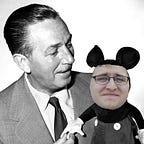Profiles in History: Dr. Hans Vestergaard, Inventor of the Bubble
New research suggests that Dr. Kurtz Havlechulk (1801–1754) was not in fact the true mastermind behind the creation of the bubble, despite his insistence that he was in his memoir, Quit Bursting My You-Know-What.
But if not Havlechulk, who then can history credit for the bubble, an innovation that has brought such joy to chewing gum salesmen and weirdos with jacuzzis?
Historians have narrowed it down to two possible subjects: Dr. Hans Vestergaard, an 18th century physicist based in Aalborg, Denmark; and Seltzer Lampoon, a wise-cracking marionette puppet in Piscataway, New Jersey.
Because Vestergaard had more incentive (often took baths), we can deduce he was the most likely genius between the two (though Lampoon made great strides with the harmonica).
Humble Beginnings
Not much is known of Vestergaard’s personal life aside from an inexplicable habit of saving chicken fat in his freezer for a broth he was always going on about.
We do know that he was born in Aalborg in 1714, the son of Gretel (née Née) and Symie Vestergaard, who made a meager living as a dog breath tester. Vestergaard grew up ashamed of his parents, largely due to their affinity for wearing beanies with little propellers on them.
“Again with the propeller beanies!” Vestergaard once wrote in an undated journal. “Can’t they see no one else finds this amusing?”
Vestergaard’s shame would morph into an immense life-long guilt after the propellers on his parents’ beanies became caught in a gust of wind and flew them away, never to be seen again.
The orphaned Vestergaard was left to be raised by his grandmother, Ulga, who for reasons unclear was actually two years younger than him.
An Escape With Suds
Ulga had grown bitter due to a lifelong inability to grasp the difference between “affect” and “effect.” She took out her insecurities on Vestergaard, cruelly beating him at checkers every night.
“Life is a bowl of agony, filled with the milk of despair,” a young Vestergaard wrote in a birthday card to a friend. “How I long to shed these mortal clothes for a blanket of earth and a pillow of mossy stone.”
To cope with his despondency, Vestergaard began taking long baths, where historians believe he first developed a fascination with suds, as well as a dissatisfaction with the shape of his feet.
From An Interest To A Passion
Vestergaard attended the Milberg School of Physics, where he majored in “dropping things,” something he always had a talent for (though he lacked drive). It was during his studies there that he met Ms. Gretta Twine. The pair became acquainted after Vestergaard accidentally dropped a melon on Gretta’s head during an experiment (the experiment was rendered inconclusive).
Vestergaard and Gretta bonded quickly over a shared mistrust of headwaiters and began spending an amount of time together. Their romance was just beginning to blossom (she had referred to his back lump “horrendous”), when Vestergaard was swept off to war.
His lengthy letters home to Gretta during his time overseas describe a growing obsession with foam — matched only by his obsession to make foam bigger and “more floaty.”
“It can be done!” he wrote. “It must be done! Wait for me, dearest Gretta. Together we’re going to change the future of foam into something much more!”
“Uh-huh,” Gretta wrote back. “Uh-huh.”
When Vestergaard returned home four years later after realizing that there was no war (it was actually just an extended argument with the manager at a local Walgreens), he found Gretta had left him for a shepherd named Farty Melvin.
Gretta would later go on to invent alphabet soup, though it only contained the letter “I.”
His Breakthrough And Death
Heartbroken and alone, Vestergaard turned all of his attention to his bubble ambitions. Historical records during this period are slim, but many historians believe it was the shape of the “big wimpy tears” he was constantly shedding that inspired what would become the well-rounded bubble we enjoy today.
Vestergaard is believed to have developed the original bubble formula (soap + suds + cocaine) around 1759. The invention appears to have brought him little satisfaction, and historians believe an incident involving “soap in his eye” led Vestergaard to set fire to his laboratory and destroy all of his remaining documents.
He spent his remaining days trying to create a “Santa beard” out of foam. He died in the winter of 1790 of hypothermia after falling asleep in his “outdoor tub” in an attempt to prove that ice was not naturally occurring.
